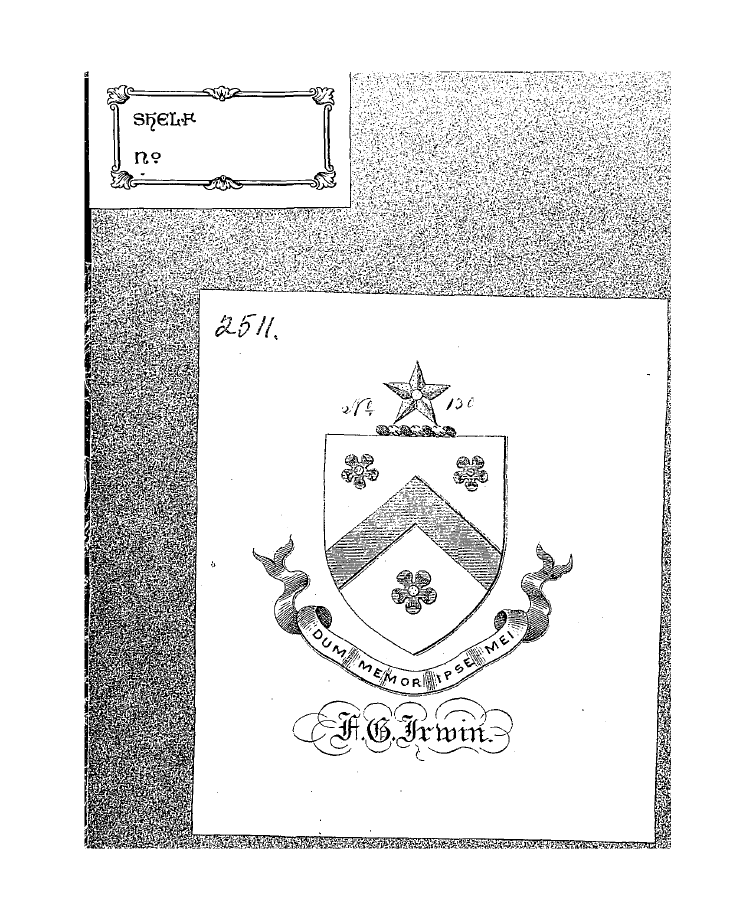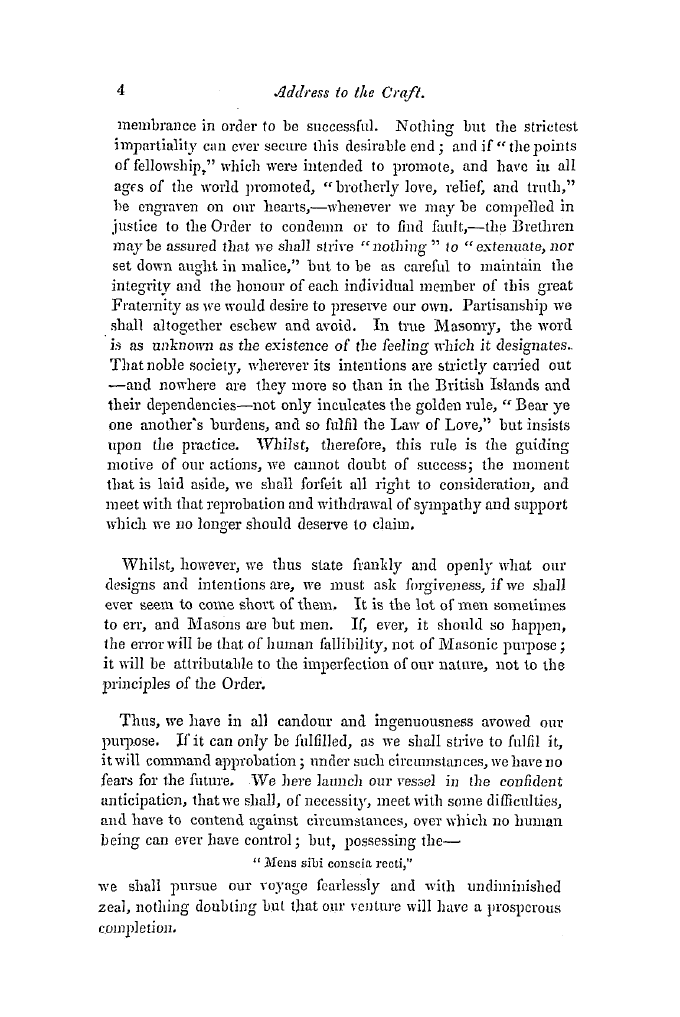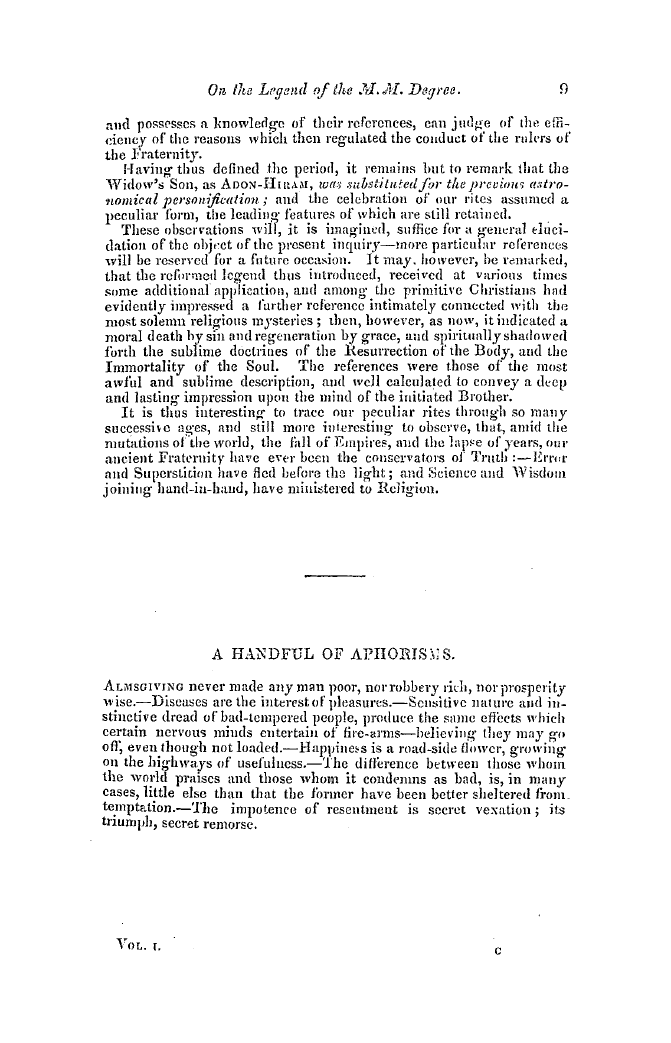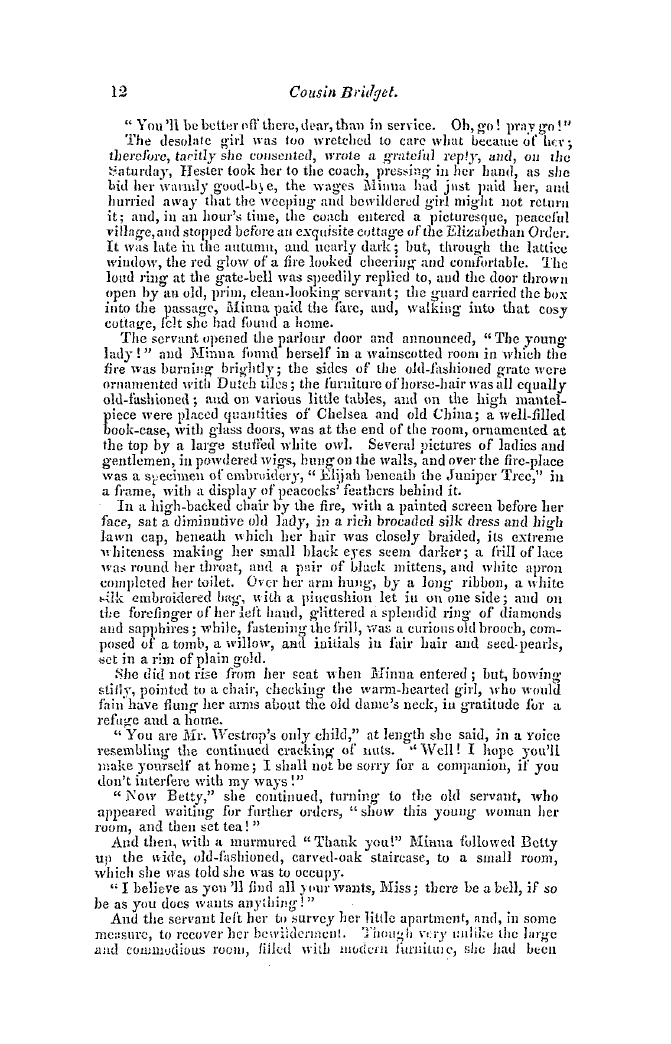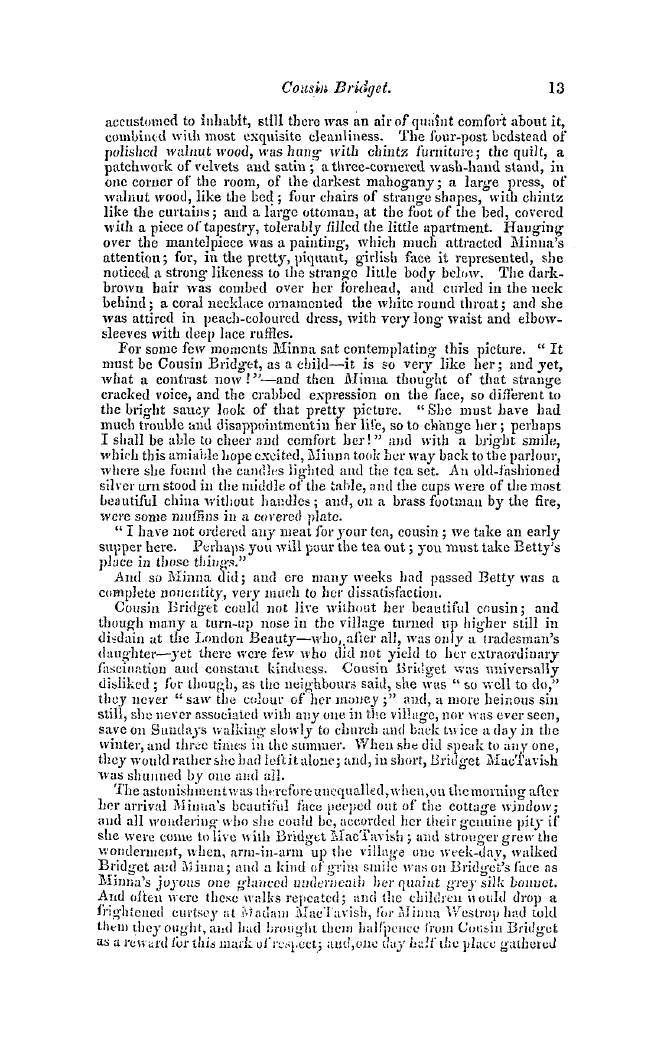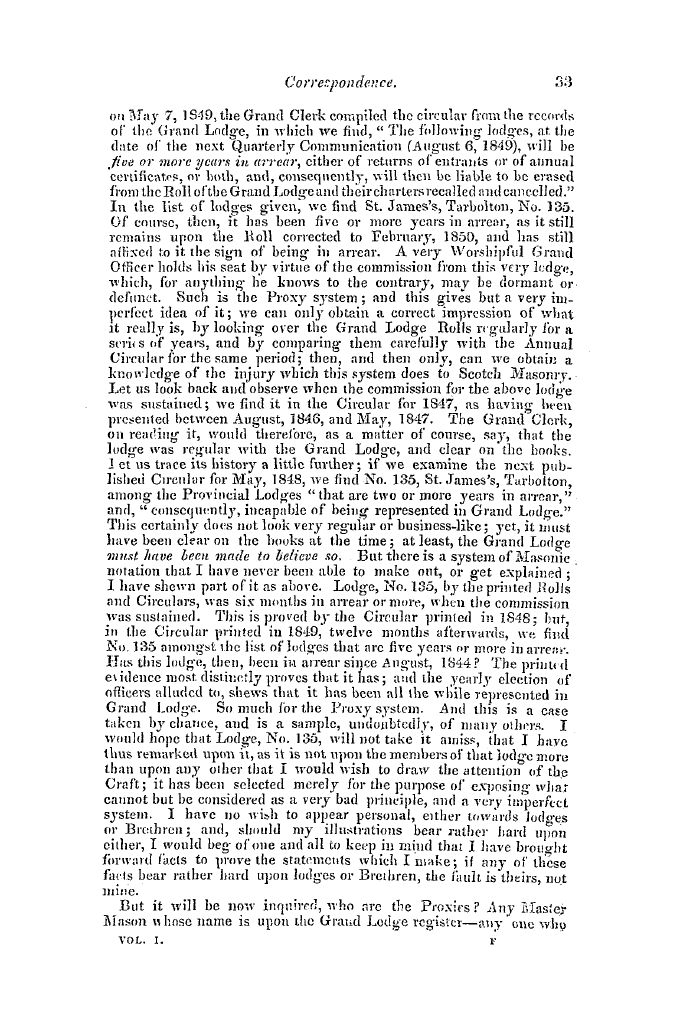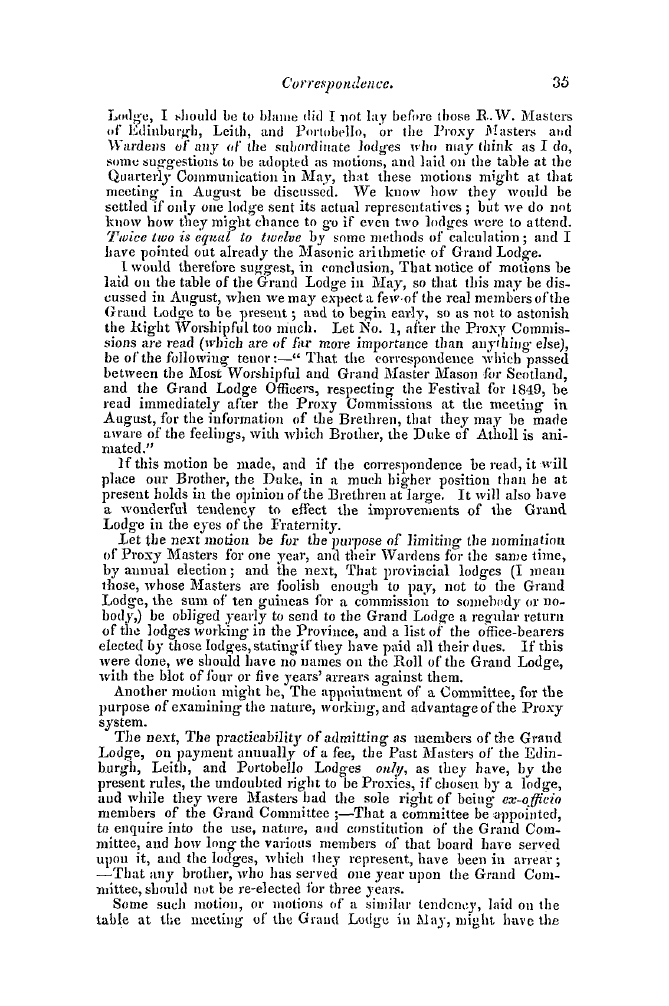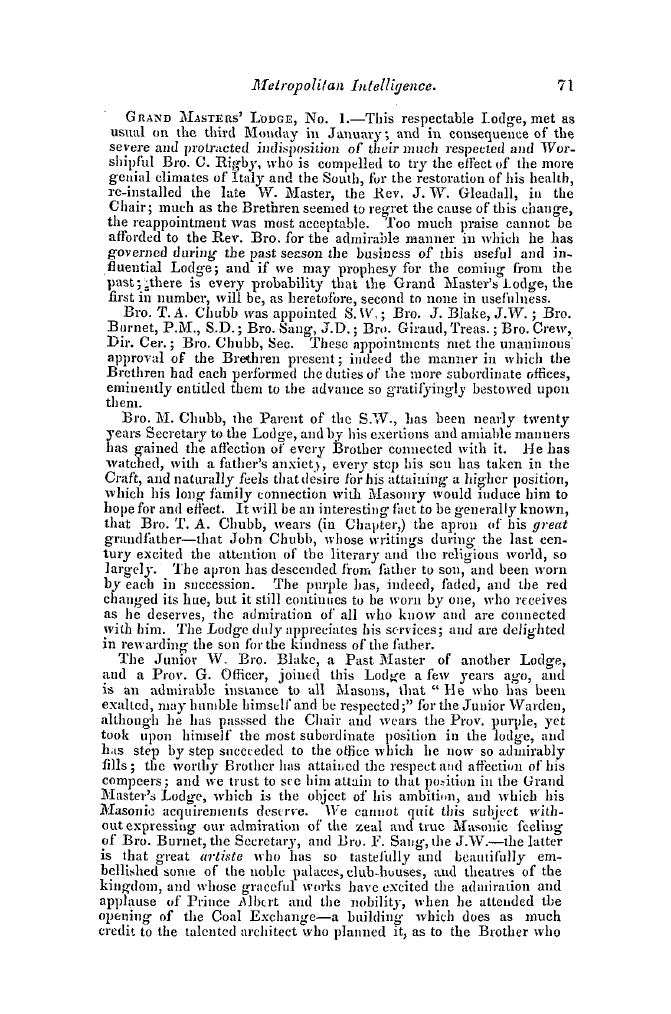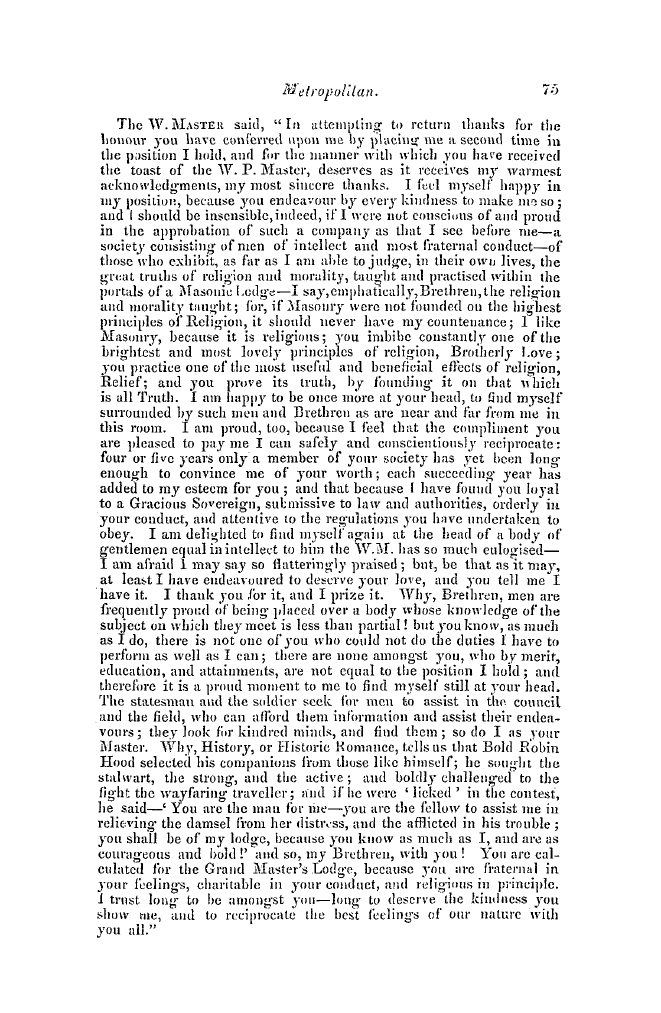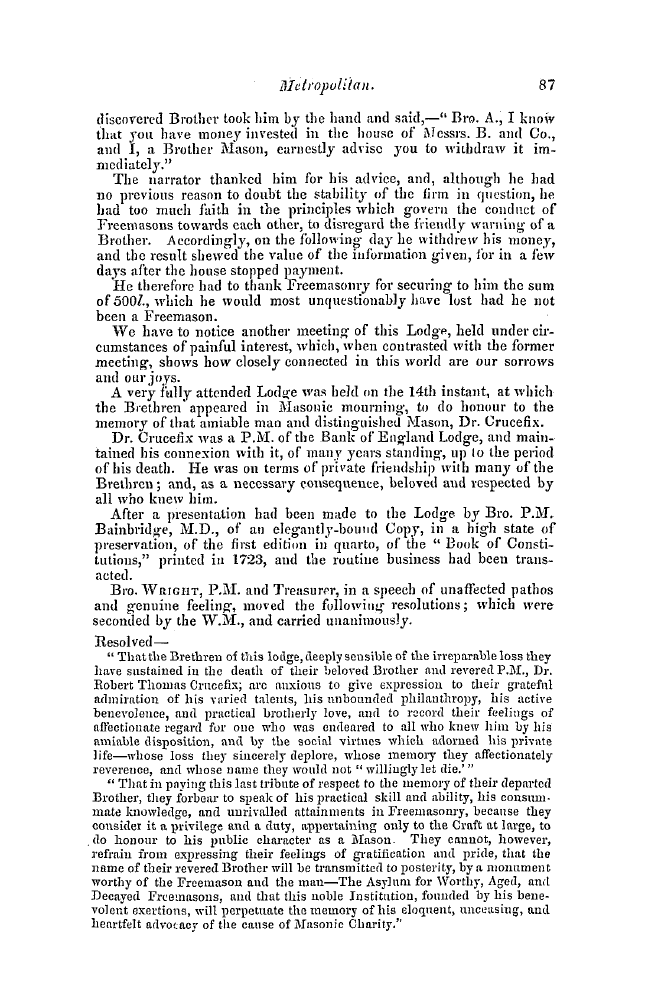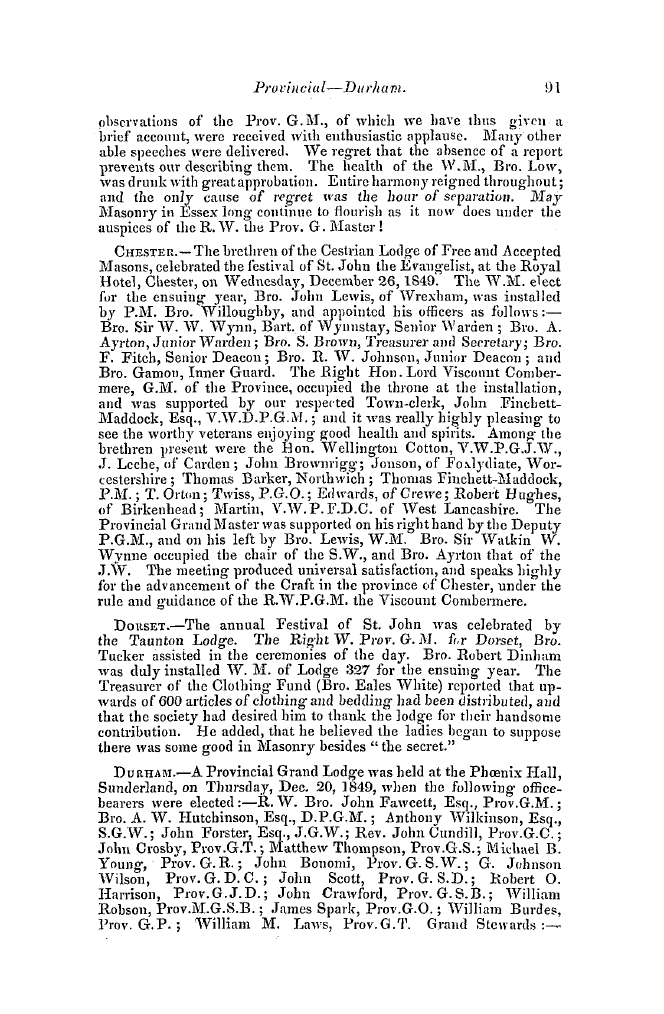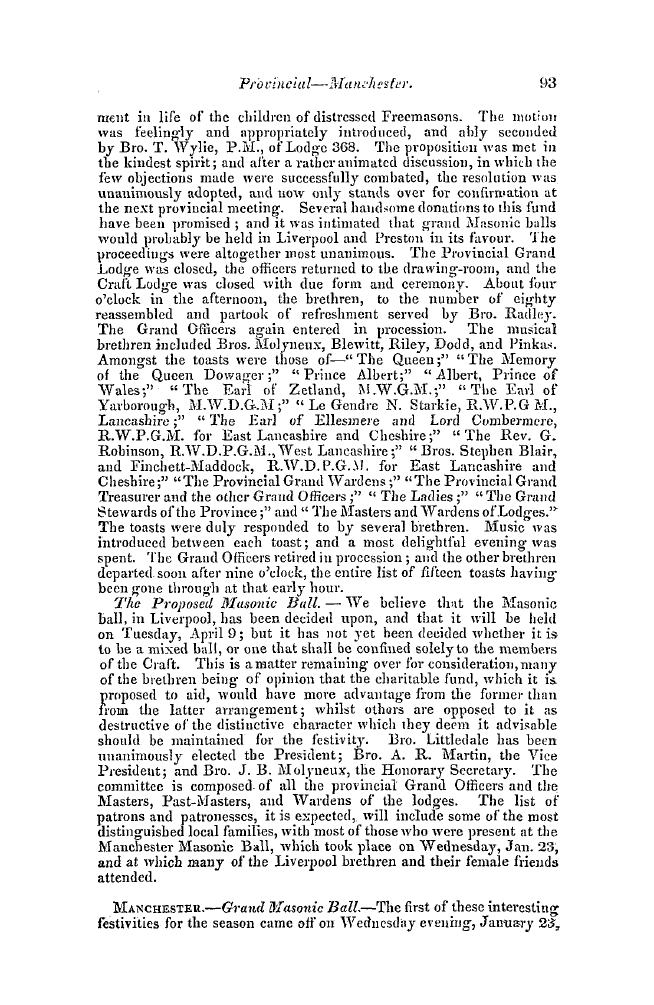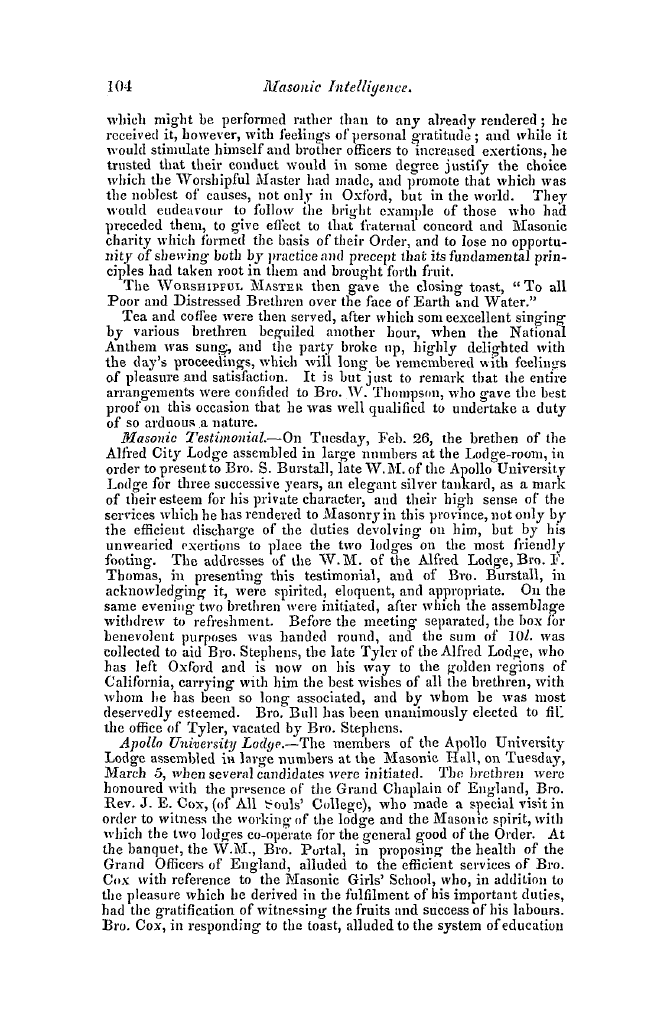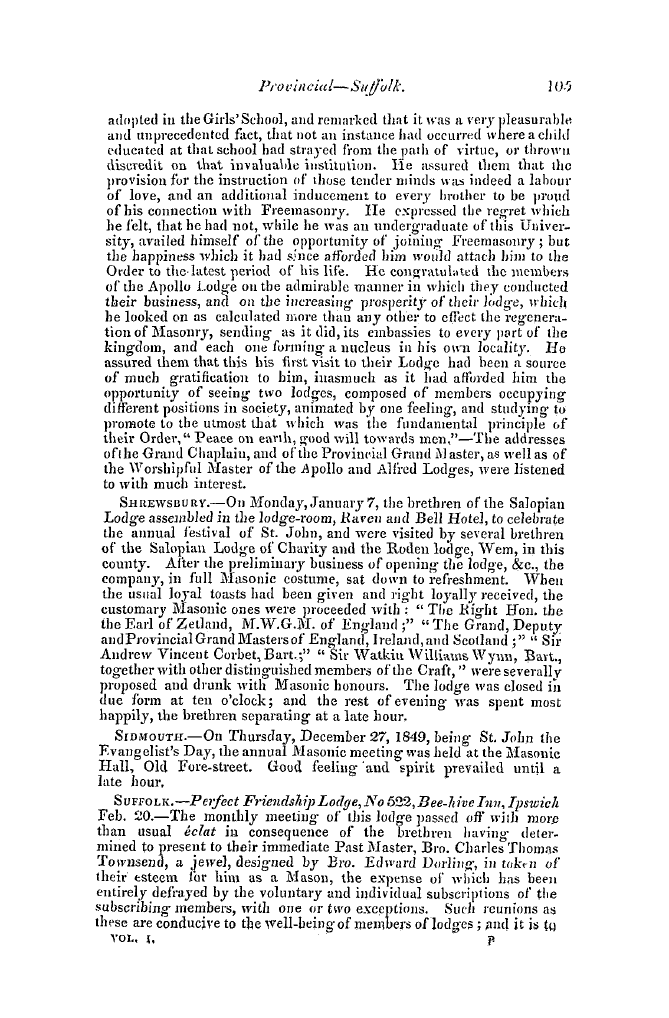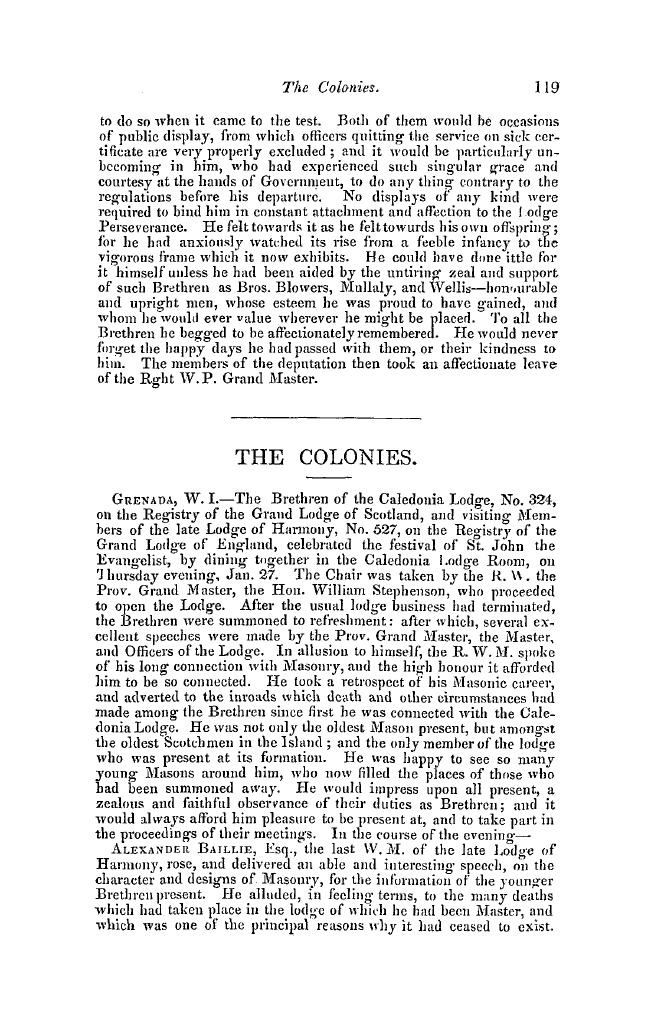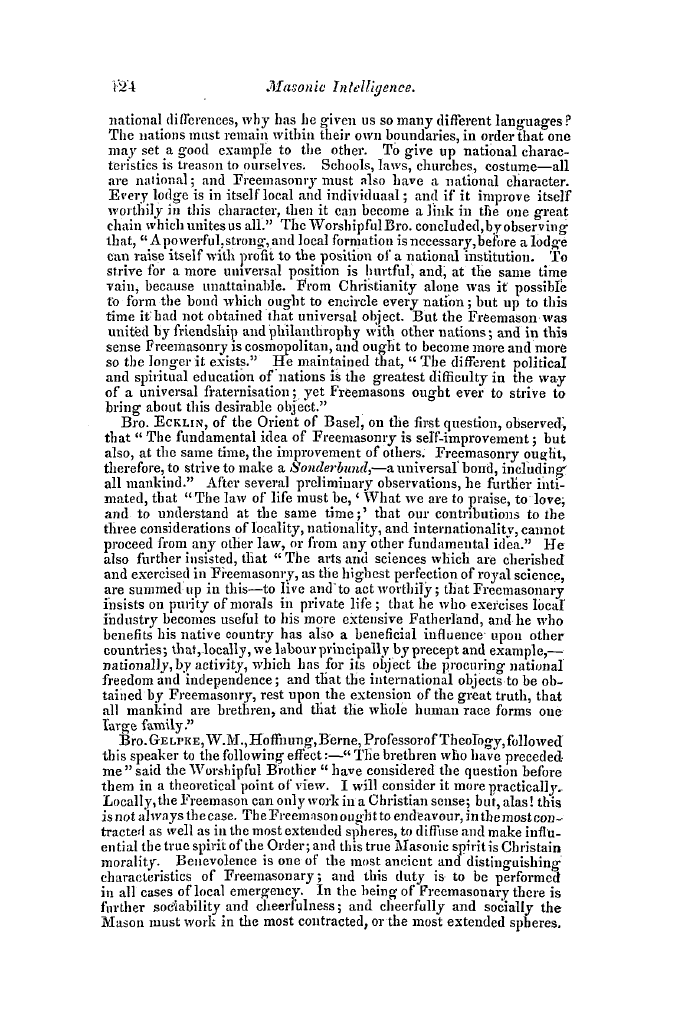Note: This text has been automatically extracted via Optical Character Recognition (OCR) software.
Symbolical Character Of Mediæval Heraldry And Its Connection With Freemasonry.
been , and is still , in use in various parts of the world , as the means of representing a secret system of reli gion and morality , not only among the Christians from p rimitive times , but among nations , whicli existed many centuries before the coming of our Lord . To descend to later times it has been discovered as a Mason ' s mark upon ecclesiastical buildings on the Continent ; and we find it constantly introduced in vestments till theend of the Fifteenth Century ; aperiodwhichas Pugin
, , observes , was marked by great departure from traditional symbolism . Next to the Cross , the Chevron is one of the most remarkable bearings ; and , together with its diminutive the Chevronel , is a very ancient ordinary . " Chevron is a Norman French word , signifying the main beams or rafters of a house , and , in fact , represents those large timbers , which at regular intervals support tiie roof , ancl are known more generall y by the name of principals or couples .
Dame Juliana Berners says , "Chevrons be called in Latin , ' signa capitalia vel tigna , '' and in English , ' a cowpul of spams , ' as here is shewed iu these signes , the which by liklenes first were borne of carpentaries and makers of bowses ; for a how se is never made perfect till those spars be put upon it by the manner of a head , and such spars or chevrons joiu'd together make a capital signo . " The Chevronel is a diminutive of the Chevron , and is often multiplied in . the same coat , and
may be supposed to represent the smaller timbers or rafters , of ivhich there are many in the intervals between the several principals . No . 3 in the Plate , is an instance of a Chevron disjointed or fracted , said to be borne by the name of Discord ; ivhich , if' it be a fact , may
be considered to be a curious instance of a cantine coat of arms . No . 4 is an instance of a Chevron fracted or removed one joint , and strongly resembles an arch with the keystone removed . " The Chevron , " says Poole * ( in tracing- the connexion which exists between Heraldry and Architecture ) , "composed , as it were , of two rafters leaning against each other , represents the tectum , or roof of a house ; and it is , as the learned Nicholas Upton has it , one of those bearings ,
which , ' per carpentarios et domorur . i faetores dim pertaluntur ;' but it has a more honourable signification , and adumbrates under the form of a roof , by a figure common to most languages as well as that of Heraldry , the house—in the second intention of the word , the famil y and lineage . The arms of Canby afford us au instance , viz .: Argent three chevronels in base , interlaced sable , on a chief of the 2 nd , three mullets of thelst—a coativhich is expressly said to record the ercctiou
, of three great houses in one province by the founder of this family . " Gerard Legh , in his " Accidence of Armoury , " published in 1562 , in support of a similar view , with respect to the meaning sometimes conveyed by the Chevron , quotes the following passage from the Book of St . Albans : "The three Chevronels brassed , show that ' the Ancestoury of thys cote hath [ sic ] buildcih [ sic ] three great houses in one province ''
We have , therefore , good authority for supposing , that the Chevron and its diminutive were adoptctl as the peculiar badge of such persons as either by profession or inclination had devoted themselves to Architecture . May we not further infer , that the Chevron was a strictly Masonic emblem , immediately derived from the Science of Masonry ,
Note: This text has been automatically extracted via Optical Character Recognition (OCR) software.
Symbolical Character Of Mediæval Heraldry And Its Connection With Freemasonry.
been , and is still , in use in various parts of the world , as the means of representing a secret system of reli gion and morality , not only among the Christians from p rimitive times , but among nations , whicli existed many centuries before the coming of our Lord . To descend to later times it has been discovered as a Mason ' s mark upon ecclesiastical buildings on the Continent ; and we find it constantly introduced in vestments till theend of the Fifteenth Century ; aperiodwhichas Pugin
, , observes , was marked by great departure from traditional symbolism . Next to the Cross , the Chevron is one of the most remarkable bearings ; and , together with its diminutive the Chevronel , is a very ancient ordinary . " Chevron is a Norman French word , signifying the main beams or rafters of a house , and , in fact , represents those large timbers , which at regular intervals support tiie roof , ancl are known more generall y by the name of principals or couples .
Dame Juliana Berners says , "Chevrons be called in Latin , ' signa capitalia vel tigna , '' and in English , ' a cowpul of spams , ' as here is shewed iu these signes , the which by liklenes first were borne of carpentaries and makers of bowses ; for a how se is never made perfect till those spars be put upon it by the manner of a head , and such spars or chevrons joiu'd together make a capital signo . " The Chevronel is a diminutive of the Chevron , and is often multiplied in . the same coat , and
may be supposed to represent the smaller timbers or rafters , of ivhich there are many in the intervals between the several principals . No . 3 in the Plate , is an instance of a Chevron disjointed or fracted , said to be borne by the name of Discord ; ivhich , if' it be a fact , may
be considered to be a curious instance of a cantine coat of arms . No . 4 is an instance of a Chevron fracted or removed one joint , and strongly resembles an arch with the keystone removed . " The Chevron , " says Poole * ( in tracing- the connexion which exists between Heraldry and Architecture ) , "composed , as it were , of two rafters leaning against each other , represents the tectum , or roof of a house ; and it is , as the learned Nicholas Upton has it , one of those bearings ,
which , ' per carpentarios et domorur . i faetores dim pertaluntur ;' but it has a more honourable signification , and adumbrates under the form of a roof , by a figure common to most languages as well as that of Heraldry , the house—in the second intention of the word , the famil y and lineage . The arms of Canby afford us au instance , viz .: Argent three chevronels in base , interlaced sable , on a chief of the 2 nd , three mullets of thelst—a coativhich is expressly said to record the ercctiou
, of three great houses in one province by the founder of this family . " Gerard Legh , in his " Accidence of Armoury , " published in 1562 , in support of a similar view , with respect to the meaning sometimes conveyed by the Chevron , quotes the following passage from the Book of St . Albans : "The three Chevronels brassed , show that ' the Ancestoury of thys cote hath [ sic ] buildcih [ sic ] three great houses in one province ''
We have , therefore , good authority for supposing , that the Chevron and its diminutive were adoptctl as the peculiar badge of such persons as either by profession or inclination had devoted themselves to Architecture . May we not further infer , that the Chevron was a strictly Masonic emblem , immediately derived from the Science of Masonry ,
